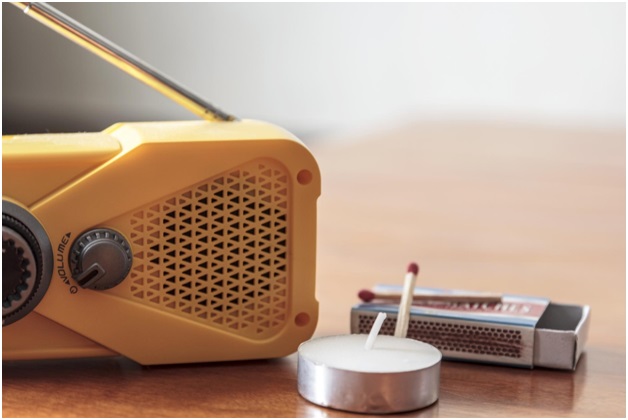Depending on the time of year and the location, you can turn on your television any time of day and see reports of blizzards, hurricanes, tornadoes, thunderstorms, and other weather hazards. But, of course, if the emergency is happening in your area, there’s a good chance you’ll see nothing on the television at all. One of the first things to go down in an emergency situation is the power grid and with it goes our ability to access information and communicate.
It is important then to be prepared with a communication plan and with the appropriate devices to help you communicate in the event of a power failure. It’s a good idea to start with a communications network designed to pass information to those who need it. Decide who the most important people are for you to pass information to and then designate two people–one in your local area and one in another state who is less likely to be affected by the outage–who will be the key communicators. As part of this plan, you may also want to designate a place for close family members or friends to meet in case of a complete inability to communicate.
Next, be sure you have batteries and/or chargers (with a full charge) in stock. You can also purchase solar chargers that can provide not only battery recharges but energy for light in the case of long term outages. A more expensive but useful option is to purchase a generator that can provide electricity not only for communicating but also or receiving information via televison and Spectrum One internet (if those systems aren’t down as well). A landline can also be handy as they will sometimes operate even when the power grid is down.
Your primary means of communication will initially be your cell phone, and there are a number of ways you can prolong its charge even if you have no means of recharging (remember too that a laptop can act as a huge battery charger for your phone by connecting the two devices through USB):
- Put your phone in low power mode;
- Place your phone in airplane mode when not checking messages or calling;
- Disable GPS, cellular data, bluetooth, and wifi;
- Reduce screen brightness when phone is in use;
- Turn off push notifications;
- Disable apps that run in the background.
In some circumstances, local cell towers may be affected by outages as well (back up generators at towers usually last for hours), which means you will also want another means of communication (more than one method is preferable).
One of the cheapest and easiest ways to communicate over short distances is to keep two-way radios on hand. It is worth investing in good devices as they will have a greater range and better battery life. Another limited but less expensive way to communicate locally is through a battery-operated CB radio. These devices, however, are limited and range and few people use them so you’re less likely to make contact.
There are some excellent options for longer range communication, but they will cost you more. Satellite phones can give you excellent range but cost over $1,000 and often require that you pay for a service and for minutes used. Ham radios are also an excellent choice, but require equipment and know-how.
Ultimately, you should have at least two means of communicating without power and a plan in place to send important information to your loved ones. Keep in mind that text and email messages sometimes go through even when phone calls don’t. The key is to be prepared. The planning you do in advance will pay off when the lights go out.
Written by Ivan Young
Also Read More: Apna has become India’s fastest unicorn thanks to a $100m investment led by Tiger Global / Lengoo brings in a new $20M round with AI translation offering that rivals experts /
